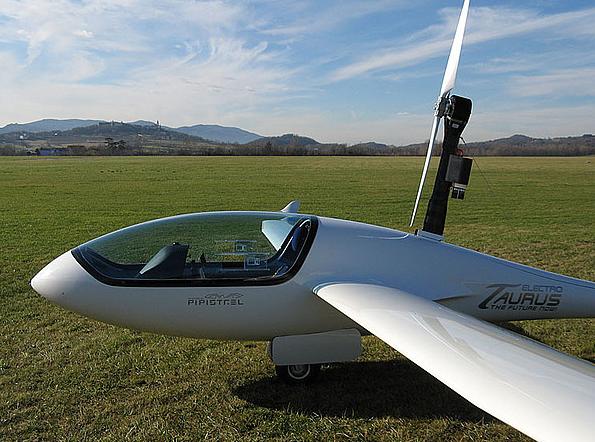Original URL: https://www.theregister.com/2009/08/03/nasa_green_plane_compo/
NASA announces $1.5m prize for eco-plane inventors
Flying machines go green diddly green green
Posted in Science, 3rd August 2009 12:28 GMT
US space agency NASA has announced a competition for green aircraft designers, in which low-carbon flying machines will contend for a $1.5m prize at a contest to be held in California in two years' time.

You didn't want that flying car, did you? Have an electric plane (well, glider) instead.
The compo is to be run by NASA's usual light-aircraft collaborator organisation, the Comparative Aircraft Flight Efficiency (CAFE) Foundation. It will be known as the CAFE Green Flight Challenge (CGFC), and competing aircraft will be assessed in flight trials to take place at the Charles M Schulz Sonoma County Airport in Santa Rosa, California, in July 2011.
CAFE and NASA were formerly involved in attempts to develop so-called Personal Air Vehicles (PAVs), basically the closest approach to flying cars that might be realistically achievable. A fully-developed PAV wouldn't be a Jetsons aircar: rather it would be a normal light plane with several important enhancements. These would include cheapness, quiet operation, short takeoff run, perhaps the ability to fold wings and drive on roads, and an almost hands-off autopilot/air-traffic system allowing the PAV to be flown by people with no more training than car drivers.
NASA even had its own PAV programme until 2005, but then funds were cut and the idea was downgraded to a competition run by CAFE with NASA supplying modest $250k prize money. This wasn't enough for anyone to do any serious development work, and the PAV competition attracted nothing more than some mildly-tweaked motor-gliders, old Cessnas and the like.
But the notion of flying cars has been thoroughly eclipsed in the popular mind by the concept of green low-carbon ones - as witness the now almost constant flow of electric car coverage in the tech press. Last year the PAV contest changed into a General Aviation Technology Challenge, with a Green Prize.
Personal Green Air Vehicles are what we want, apparently
Now the process is complete, with the announcement last week of the Green Flight Challenge. Where once PAV enthusiasts competed for shortest takeoff, ease of handling and so forth, now green-flight contenders will strive primarily to get the most possible passenger-miles per gallon of fuel, with cruise speed as a secondary objective. PAV/flying-car priorities such as quietness, use of car engines rather than specialised aviation powerplants, very short takeoff capability etc have all been sidelined.
"A variety of innovative experimental aircraft that fly with either electricity, solar, bio-fuel or hybrid propulsion are expected to enter," according to CAFE.
Examples could include the Taurus Electro from Pipistrel, a glider with a battery-powered prop which can be used to take off and climb as high as 6,000 feet before gliding to land. Boeing have also developed a demonstrator - again in a glider airframe - capable of flying straight and level with one pilot aboard solely on fuel-cell power (though hybrid/supplementary battery boost is required for takeoff and climb).
The focus - at least in NASA's funding deliberations - would now appear to be firmly on greenness (or at least greenwash) for the existing light aviation sector, rather than on giving ordinary people access to the skies.
That said, the minimum passenger-miles per gallon figure to be a CGFC entrant is 200, which compares very favourably with road cars occupied by only one or two people - as road cars typically are. If such aircraft can be built at reasonable prices, and Western civilisation can be made to care seriously about reducing its fossil fuel consumption, logically CGFC-style green planes should become the most popular transport choice.
On the other hand the fact that they'll require expensive and time-consuming piloting skills, 2000-foot takeoff runs, 44-foot-wide garages, won't be roadworthy and will be as noisy as machine tools will tend to militate against that.
The full competition rules are available from CAFE in pdf here. ®